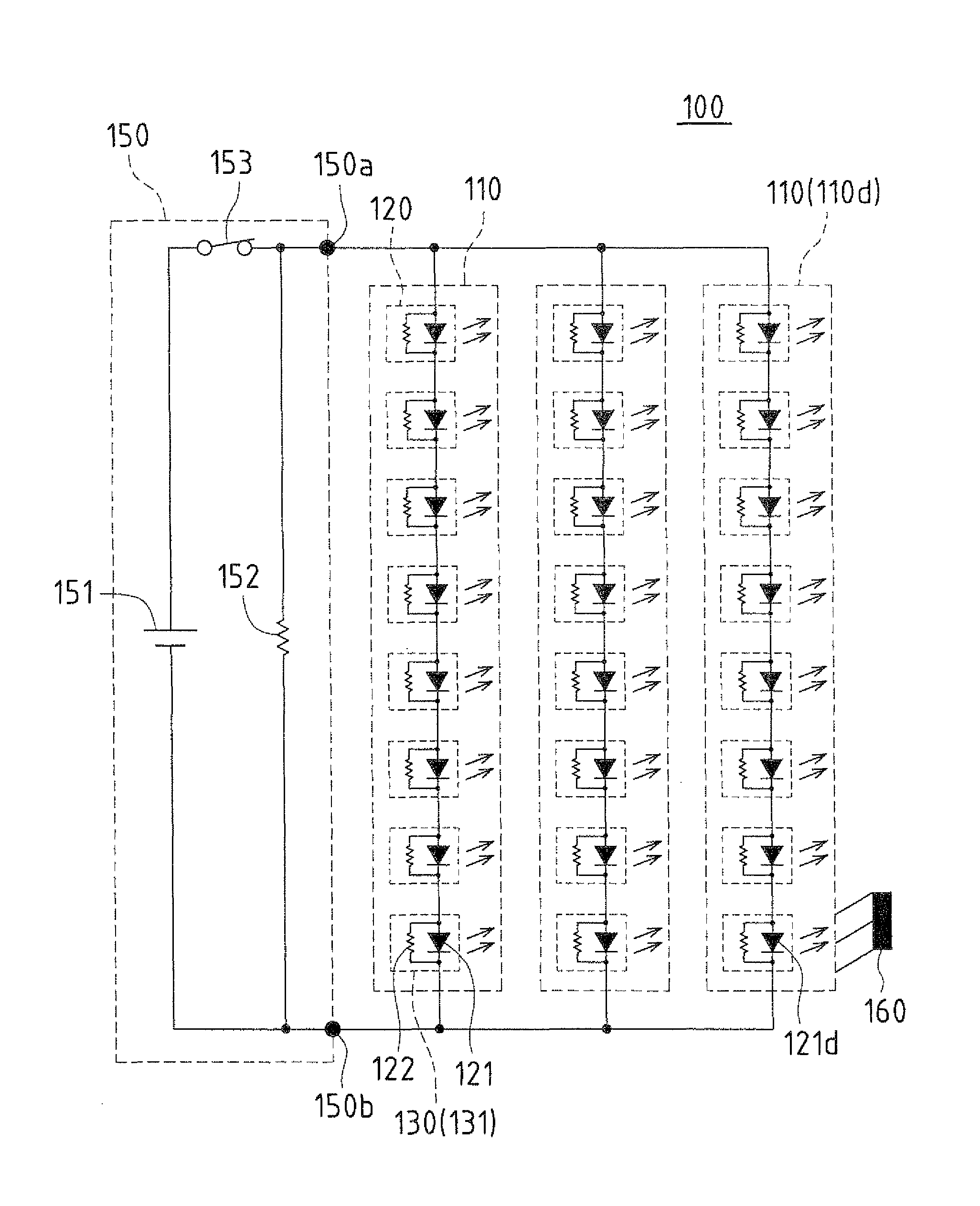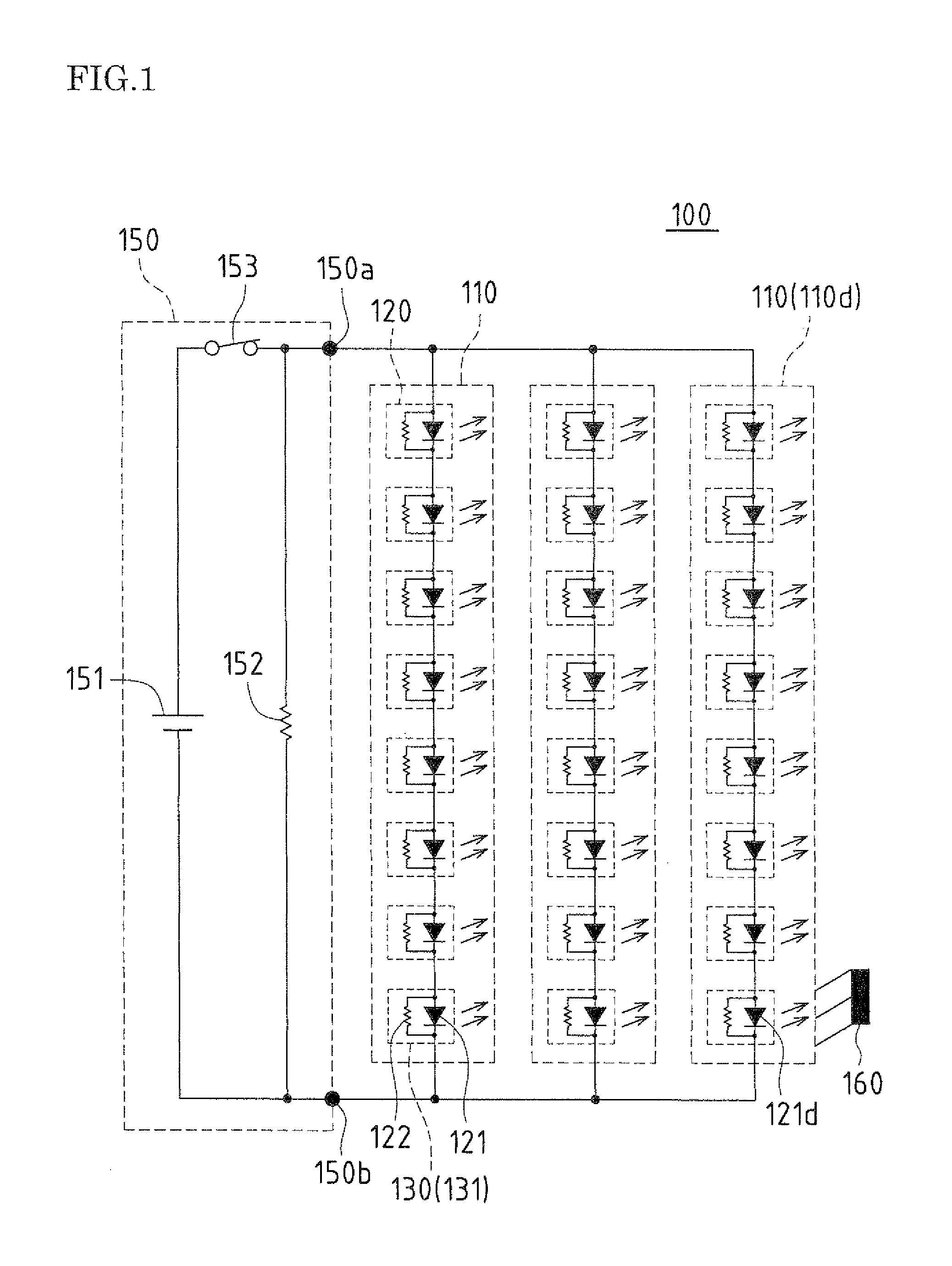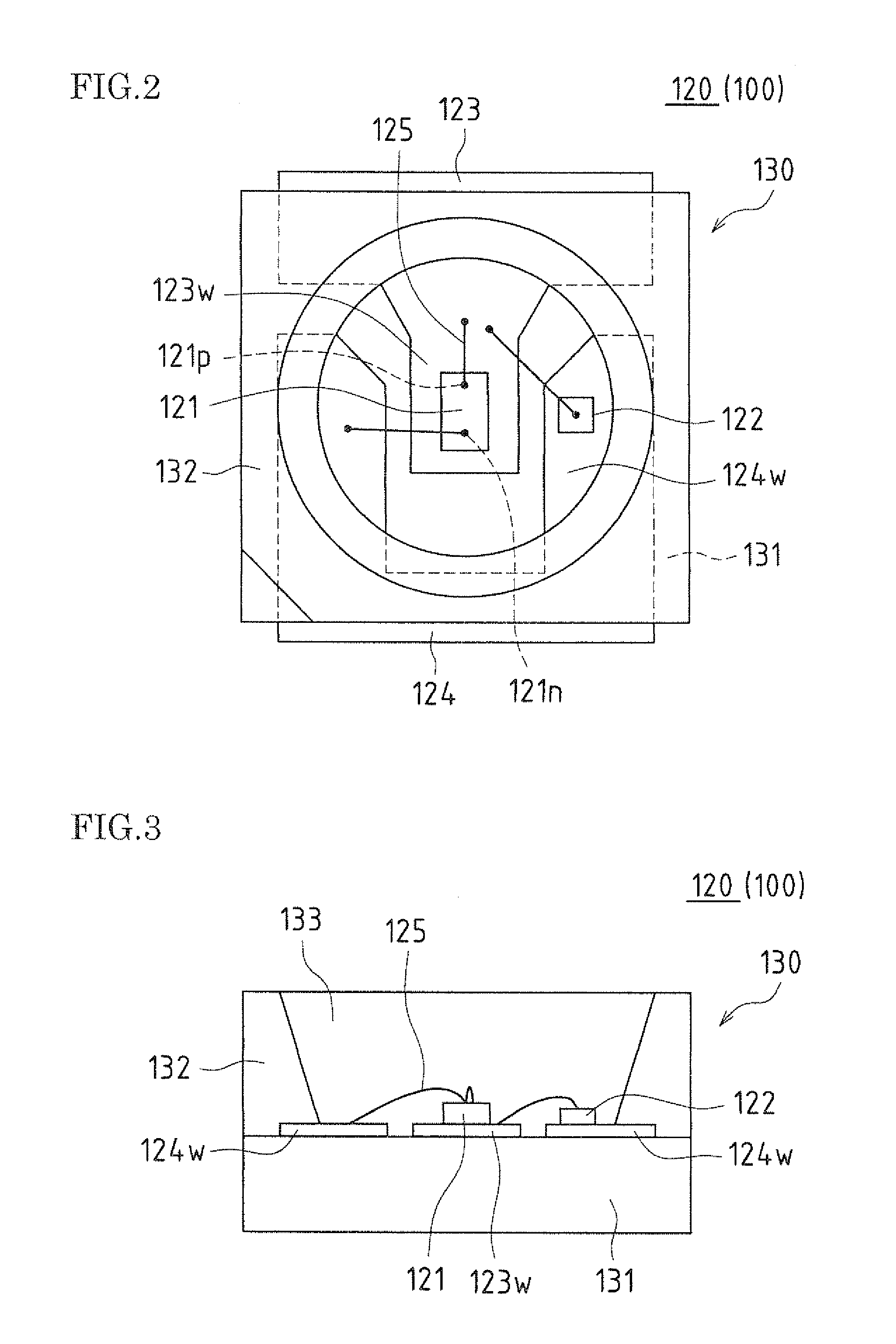Light emitting device, light emitting device unit, and method for fabricating light emitting device
a light emitting device and light emitting device technology, applied in semiconductor/solid-state device manufacturing, semiconductor devices, electrical equipment, etc., can solve the problems of less reliable zener diodes, less laborious work, and failure of leds, so as to minimize the counter-electromotive force, minimize the degradation of semiconductor light emitting elements, and minimize the effect of power consumption
- Summary
- Abstract
- Description
- Claims
- Application Information
AI Technical Summary
Benefits of technology
Problems solved by technology
Method used
Image
Examples
embodiment 1
[0080]A light emitting device and light emitting device units according to this embodiment will be described by referring to FIG. 1 through FIG. 3.
[0081]FIG. 1 is a circuit diagram of a light emitting device and light emitting device units according to embodiment 1 of the present invention.
[0082]FIG. 2 is a plan view of a light emitting device unit, as seen on its light emitting surface side, which constitutes the light emitting device shown in FIG. 1.
[0083]FIG. 3 is a see-through side view of the light emitting device unit shown in FIG. 2, with a center portion of the light emitting device unit made seen through.
[0084]A light emitting device 100 according to this embodiment includes light emitting device units 120 each including a substrate 131, semiconductor light emitting elements 121 disposed on the substrate 131, and resistors 122 coupled to the respective semiconductor light emitting elements 121.
[0085]In the light emitting device 100 according to this embodiment, each resisto...
embodiment 2
[0130]A light emitting device and a light emitting device unit according to this embodiment will be described by referring to FIG. 4 and FIG. 5. The basic configuration is similar to that in embodiment 1 and thus will not be elaborated here.
[0131]FIG. 4 is a circuit diagram of a light emitting device and light emitting device units according to embodiment 2 of the present invention.
[0132]FIG. 5 is a diagram illustrating a light emitting device unit and a second composite light emitting device unit that constitute the light emitting device shown in FIG. 4, with (A) showing a plan view to illustrate a plan condition as seen on the light emitting surface side, and (B) showing an enlarged see-through side view to illustrate an enlarged side surface condition as seen through from arrow B of (A).
[0133]A light emitting device 200 according to this embodiment includes light emitting device units 220 each including a substrate 231, light emitting elements 221 on the substrate 231, and a resi...
embodiment 3
[0165]Referring to FIG. 6A through FIG. 6G, a third embodiment (method for fabricating the light emitting device, method for fabricating the second composite light emitting device unit) will be described as a method (fabrication process) for fabricating the light emitting device 200 (second composite light emitting device unit 210) according to embodiment 2. The light emitting device 200 in FIG. 6B through FIG. 6G is shown for the purpose of describing the steps and thus in a simplified form.
[0166]FIG. 6A is a flowchart schematically showing a method for fabricating a light emitting device, according to embodiment 3 of the present invention.
[0167]The method for fabricating the light emitting device 200 includes step S1 (separation groove forming step) through step S9 (dam sheet removing step).
[0168]Specifically, step S1 is a separation groove forming step shown in FIG. 6B. Step S2 is a wiring electrode forming step (wire printing, drying, and sintering step) shown in FIG. 6C. Step S...
PUM
 Login to View More
Login to View More Abstract
Description
Claims
Application Information
 Login to View More
Login to View More - R&D
- Intellectual Property
- Life Sciences
- Materials
- Tech Scout
- Unparalleled Data Quality
- Higher Quality Content
- 60% Fewer Hallucinations
Browse by: Latest US Patents, China's latest patents, Technical Efficacy Thesaurus, Application Domain, Technology Topic, Popular Technical Reports.
© 2025 PatSnap. All rights reserved.Legal|Privacy policy|Modern Slavery Act Transparency Statement|Sitemap|About US| Contact US: help@patsnap.com



